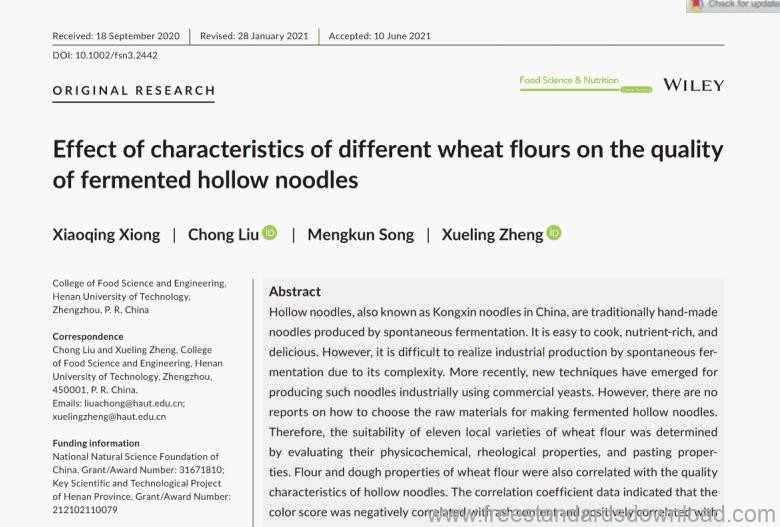
Hollow noodles, also known as Kongxin noodles in China, are traditionally hand-made noodles produced by spontaneous fermentation. It is easy to cook, nutrient-rich, and delicious. However, it is difficult to realize industrial production by spontaneous fermentation due to its complexity. More recently, new techniques have emerged for producing such noodles industrially using commercial yeasts. However, there are no reports on how to choose the raw materials for making fermented hollow noodles. Therefore, the suitability of eleven local varieties of wheat flour was determined by evaluating their physicochemical, rheological properties, and pasting properties. Flour and dough properties of wheat flour were also correlated with the quality characteristics of hollow noodles. The correlation coefficient data indicated that the color score was negatively correlated with ash content and positively correlated with starch content. Different from ordinary dried noodles, a negative correlation was observed between cooking time (CT) and protein content. Water absorption (NWA) of hollow noodles was negatively affected by extensograph properties. Water absorption of flour (FWA) and extensibility (E) were found to be highly correlated to hollow rate (Hol-R).
